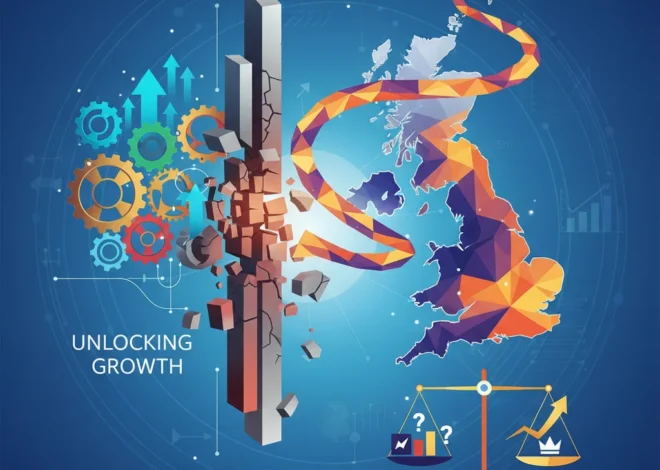
The Nordhavn Blueprint: How Copenhagen Transformed a Port into a Global Investment Case Study
From Industrial Relic to Investment Gem: Unpacking Copenhagen’s Nordhavn Success Story
Imagine a sprawling industrial port—a landscape of cranes, shipping containers, and cold, windswept concrete. Now, replace that image with waterfront apartments bathed in Scandinavian light, silent electric ferries gliding through clean harbour waters, and a vibrant community where everything is a five-minute walk or bike ride away. This isn’t a futuristic concept; it’s the reality of Nordhavn, Copenhagen’s former northern docklands, which has undergone one of the most remarkable urban transformations in modern history. Dubbed by some as a “mini Miami,” this district is far more than just a trendy neighbourhood; it’s a living blueprint for sustainable urban development, patient capital, and the future of economic growth.
For investors, finance professionals, and business leaders, the story of Nordhavn offers a powerful lesson that transcends real estate. It’s a case study in how long-term vision, innovative public finance, and a commitment to sustainability can create immense, durable value. While the global economy often rewards rapid, speculative gains, Nordhavn proves that a slower, more deliberate approach can build a resilient and prosperous ecosystem from the ground up. This transformation wasn’t accidental; it was the result of a masterfully executed, multi-decade strategy that is now, as the Financial Times reports, “firing on all cylinders.”
The Financial Architecture of a City’s Future
At the heart of Nordhavn’s success is a unique financial model that challenges conventional wisdom about urban development. The project is spearheaded by CPH City & Port Development (By & Havn), a public-private entity jointly owned by the City of Copenhagen and the Danish state. This structure allowed for a patient, strategic approach to investing, a stark contrast to the short-term profit motives that often drive private development.
The core of their strategy was a masterstroke of public finance: instead of selling land to developers upfront to fund infrastructure, By & Havn did the opposite. It secured state-backed loans to build critical infrastructure first, most notably the new Metro line extending into the district. This massive upfront investment dramatically increased the value of the surrounding land. Only then did By & Havn begin selling plots to private developers, using the profits from these sales to repay the initial loans. This “value capture” model ensured that the public, not just private entities, benefited from the increased land value created by public investment. It’s a lesson in long-term economics, demonstrating how infrastructure spending can be a self-financing engine for growth when structured correctly.
This approach effectively de-risked the project for private partners. They were buying into a location that already had world-class connectivity and a clear master plan, making it a far more attractive proposition than a speculative land purchase. This strategic sequencing of infrastructure and land sales is a key reason why Nordhavn has flourished, becoming a magnet for capital and talent.
Below is a simplified overview of the Nordhavn development model’s key financial principles:
| Principle | Description & Financial Implication |
|---|---|
| Patient Capital Model | A long-term investment horizon (projected 50 years) allows for strategic, value-oriented decisions rather than chasing short-term returns. This avoids speculative bubbles often seen in real estate trading. |
| Infrastructure-First Investment | By & Havn invested an estimated €335mn in the Metro extension before major land sales. This public investment unlocked massive private sector value. |
| Value Capture Mechanism | The profits from selling the now more valuable land are used to pay back the initial infrastructure loans, creating a self-sustaining financial loop for the public entity. |
| Public-Private Partnership | A hybrid model that leverages the stability and long-term vision of public ownership with the efficiency and innovation of private developers, creating a balanced economy within the district. |
This financial ingenuity has laid the groundwork for a thriving local economy. The district is designed to attract not just residents but also businesses, particularly those in the tech and creative sectors. A modern, sustainable, and well-connected urban environment is a powerful asset in the global competition for talent, and Nordhavn is positioned to become a hub for innovative companies, potentially including those in financial technology and fintech.
Building for People: The “Five-Minute City” as an Economic Driver
Beyond the innovative financing, Nordhavn’s success is rooted in its human-centric design. The master plan is built around the concept of a “five-minute city,” where all essential amenities—shops, schools, transport, and recreation—are accessible within a five-minute walk or bike ride. This isn’t just a lifestyle perk; it’s a powerful economic driver.
By prioritizing walkability, cycling, and public transit, the district reduces reliance on cars, freeing up space for parks, public squares, and waterfront promenades. This creates a higher quality of life, which in turn attracts and retains the skilled professionals that high-value industries covet. The emphasis on sustainability is also a major draw. Nordhavn is a designated test zone for sustainable technologies, with buildings required to meet stringent energy-efficiency standards. Features like green roofs, solar panels, and geothermal storage are standard, not exceptions. This deep integration of green principles makes the district a prime example of large-scale ESG (Environmental, Social, and Governance) investing in action.
The transformation from its industrial past is stark, as highlighted in the table below:
| Feature | Old Nordhavn (Pre-Development) | New Nordhavn (Post-Development) |
|---|---|---|
| Primary Use | Industrial shipping, container terminals, warehouses. | Mixed-use residential, commercial, and recreational. |
| Accessibility | Car-dependent, limited public transport. | Metro stations, cycle superhighways, electric ferries, walkable. |
| Environment | Industrial pollution, concrete-dominated landscape. | Clean harbour water (for swimming), green spaces, sustainable buildings. |
| Economic Focus | Logistics and heavy industry. | Knowledge economy, tech, creative industries, retail, services. |
This focus on livability directly impacts financial outcomes. Properties in well-designed, sustainable, and connected neighbourhoods tend to hold their value better over time, showing less volatility compared to the broader stock market or more generic real estate assets. For long-term investors, this stability is a compelling attribute.
Hard-Won Lessons and Future Horizons
The journey has not been without its challenges. Early phases of Nordhavn’s development drew criticism for being architecturally monotonous and at risk of becoming a “rich ghetto,” disconnected from the rest of Copenhagen (source). These were crucial, hard-won lessons for the developers. In response, By & Havn adapted its strategy, mandating more diverse architectural styles, incorporating social housing, and investing in cultural spaces and small-scale retail to foster a more authentic and integrated community fabric.
This adaptive management is a key takeaway for any large-scale investment project. The ability to listen to feedback and course-correct is just as important as the initial financial model. The success of Nordhavn has inevitably driven up property values, raising valid concerns about affordability. Balancing economic success with social equity remains an ongoing challenge, a common theme in urban economics worldwide. Managing this tension will be critical to ensuring the district’s long-term social sustainability.
The Final Verdict: A New Paradigm for Urban Investment
Nordhavn stands as a powerful testament to a different way of thinking about growth. It proves that urban development can be a force for positive economic, social, and environmental change when guided by a long-term vision and an intelligent financial framework. It shifts the paradigm from speculative real estate trading to holistic value creation.
For the financial world, the lessons are clear. Patient capital, when strategically deployed into well-planned infrastructure and sustainable design, can yield returns that are not only financial but also social and environmental. The principles underpinning Nordhavn—public-led value creation, human-centric design, and a commitment to sustainability—are not exclusive to Copenhagen. They offer a robust framework for cities and investors around the world looking to build the prosperous, resilient, and livable urban economies of the future. Nordhavn isn’t just a cool neighbourhood; it’s a glimpse into the future of smart banking, intelligent investment, and sustainable capitalism.

